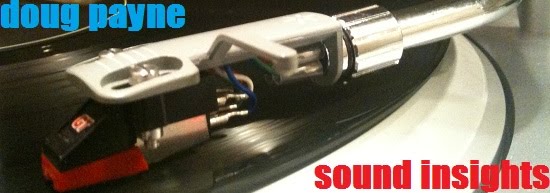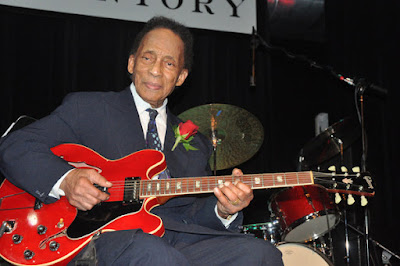I recently received an email message from the Spanish Fresh Sound Records listing Spoonful as a new release. Only after I ordered it did I learn this marvelous double-disc set was issued way back in 2017. Still, it was new to me and well worth the effort to get.
Why name a big band after Gil Evans? French pianist, composer, arranger and bandleader Laurent Cugny puts it simply: “Pleasure of sound, of harmony, of melody, of form.” Indeed, Gil Evans (1912-88) had a language all his own. Maybe several languages. And each were pure pleasure.
In addition to being a musician and bandleader, Cugny is also a professor of music and musicology at Sorbonne Université. He is also the author of a number of significant jazz-related books, notably Las Vegas Tango: Un vie de Gil Evans (1989) and Électrique Miles Davis, 1968-1975 (1993), neither of which were ever translated in to English.
Cugny’s books available in English include the well-regarded reference texts Analysis of Jazz (2019) and Eurojazzland (2012), on which he served as a contributor and coeditor.
Laurent Cugny (b. 1955) met Evans in the mid-eighties when the younger man was writing what turned out to be the first book published about the jazz legend, best known then – and probably still today – for his magnificent work with Miles Davis. (At the time, Maria Schneider, now a revered leader of her own orchestra, was more than a protégé: she, too, was actively working with Evans.)
In 1987, Cugny invited Evans to travel to Europe to play his music with the French bandleader’s Big Band Lumiere. They played 21 dates in Europe and recorded enough music to fill two discs, Rhythm-a-Ning (1988) and Golden Hair (1989).
Both of these discs were studio recordings (captured over several days in November 1987), a real rarity for Evans at this point in his recording career – and both loom large as some of Evans’s best late-period work. Much of the reason for these discs’ artistic success is due, in large part, to Laurent Cugny himself.
”My idea at the time,” writes Cugny in this disc’s liner notes, “was…to rebalance somewhat the equilibrium between writing and improvisation, which, to my taste, too often went towards improvisation in his groups in his later style.”
Cugny, who cites his own favored model of the maestro’s, the superb 1972 album Masabumi Kikuchi + Gil Evans, continues to remain fond of Gil Evans – in his own music as well as the wide-ranging repertoire of Evans himself.
Cugny continues to work actively in France, and has worked with such Americans (in Paris) as Abbey Lincoln, Lucky Peterson and Rhoda Scott.
In what is – at least, to date – the lone GEPW project, Cugny manages to balance the acoustic and electric Evans and the decades-length Evans-like sound in a 16-piece band, with electric guitar and Fender Rhodes mixing and matching with French horns, tuba, trumpet and saxophone.
This remarkable double-disc set from 2017 features one disc devoted to the music of Laurent Cugny, titled “La vie facile” (The Easy Life) and another to the music of Gil Evans titled “Time of the Barracudas.” Each holds many secrets, only some of which I will reveal here.
Cugny bolts out of the gate, running with the banger that is “Krikor.” Given the gaming craftsmanship and the crafty gamesmanship at play here, it’s likely the song is named for the Brazilian chess grandmaster Krikor Mekhitarian. The solos may well be beside the point (the clever writing is what is most memorable here), but tenor player Adrien Sanchez takes solo honors, while Cugny offers up an impressionistic Gil Evans-like piano “solo” that gives the clever piece a welcome moody and contemplative vigor that sixties-era Evans would have appreciated.
The set progresses beautifully with a gorgeous cover of Milton Nascimento’s “Lillia,” spotlighting the ethereal and evocative guitar work of Marc-Antoine Perrio and a Steve Lacy-meets-Wayne Shorter soprano solo by Martin Guerpin (“Lilia” is best known from Wayne Shorter’s 1975 album with Nascimento, Native Dancer).
Also of note are Cugny’s lively, loping and lovely “Liviore,” the dreamy “La vie facile” and GEPW French Horn player Victor Michaud’s compelling “Louisville,” featuring a haunting trombone solo by Bastien Ballaz. “Louisville” harks to or recalls, to this listener, the dramatic and emotional story-like gravitas of so much of Snarky Puppy’s work. (I hear a little Hugh Masekela – or maybe Jonas Gwangwa – here too.)
One of the nicest surprises on this part of the program is the Gershwin classic “My Man’s Gone Now.”
You’d think this properly belongs on the Gil Evans portion of the set. But not the way Cugny handles it. Here, Cugny reframes the Porgy and Bess piece in the Miles mode of David Crosby’s “Guinnevere” – which Cugny previously tapped for his own “Lady, Like Yours” (from the terrific 1991 disc Santander). A dash of “Las Vegas Tango” informs as well – as though delivered by Henry Mancini.
With a few exceptions, the disc devoted to the music – or, more specifically, the repertoire – of Gil Evans, dubbed here “Time of the Barracudas,” falls just below the high bar set by “La vie Facile” and, in some respects, the earlier discs Cugny waxed with Evans, too.
Cugny covers a great swath of Evans’s music – maybe too great. The set spans Evans material from the fifties (“King Porter Stomp,” “Bud and Bird”) to the eighties (“London” and the Mingus covers), with the best material coming from somewhere in between. To be fair, though, the two extremes in Evans’s career noted here surprisingly seem to have much more in common than not.
Still, rousing as it is, the opener, “King Porter Stomp,” is a bit of a jolt. It’s delivered with great verve and Cugny’s typical wit but seems only peripherally Evans-ish. Jelly Roll Morton’s original was first “interpreted” by Evans on his 1958 album New Bottle, Old Wine. It wasn’t so much a feature for Evans (or even his writing) as much as it was a showpiece for saxophonist Cannonball Adderley, who swings the hell out of the tune.
Here, alto player Antonin-Tri Hoang gives it his all, but he still can’t fit it in to what this listener considers Evans country. (To be fair, Evans revisited the tune again in 1975, a few months before Adderley’s untimely death, where it was a feature for David Sanborn.)
But if opening with “King Porter Stomp” seems a bit off, the remaining program is beautifully balanced with alternating Cugny duets, all in the ever-so brief one-to-two-minute range: the underrated “Sunken Treasure” (with Pierrio), “Zee Zee” (with Quentin Ghomari), “Orange was the Color of Her Dress, Then Silk Blues” (with Martin Guerpin) and two versions of “The Barbara Song” (one with Bastien Ballaz and another with Cugny on dueling keyboards).
With these pieces, Cugny reveals precisely how Evans could turn mere sketches into full-fledged paintings. But on the longer pieces, Cugny expertly turns Evans’s one-act plays in to three-act theater.
This is most evident on the haunting and hypnotic 15-minute take of Willie Dixon’s “Spoonful.” While certainly this disc’s finest moment, the otherwise wonderful tune has a troubled provenance in Evans’s world.
Originally made famous by Howlin’ Wolf in 1960, ”Spoonful” was recorded by Evans in 1964 but not issued at the time. When a nine-and-a-half-minute edit of the song was first issued in 1974, Evans was unhappy about its release. Presumably, he was displeased with the performance but perhaps he was more upset about the edit. The song was, however, restored to its original near 14-minute glory – to Evans’s apparent satisfaction – for the 1988 CD release of The Individualism of Gil Evans.
Cugny joyfully extends Evans’s framework on “Spoonful” while juicy solos are served up by Marc-Antoine Perrio on guitar, Quentin Ghomari on trumpet, Léo Pellet on trombone and Antonin-Tri Hoang on alto sax.
“Spoonful” is undoubtedly Spoonful’s “La Nevada” or “Las Vegas Tango” moment, two Evans classics curiously missing here – even as Cugny boasts in his liner notes of getting Evans to perform “La Nevada” during their time together, a song Evans hadn’t performed since recording it on Out of the Cool in 1960.
Additional highlights of this Evans-Cugny collaboration include the perfectly evocative “Time of the Barracudas,” with Adrien Sanchez on tenor sax, Charles Mingus’s always delightful “Boogie Stop Shuffle” (which Evans arranged, late in his career, for the soundtrack to the 1986 film Absolute Beginners) and the bravura “Blues in Orbit,” with solos by Miles-ish Brice Moscardini on trumpet and Eric Dolphy-esque Jean-Philippe Scali on bass clarinet.
Kudos, too, to Cugny for the New Orleans lilt he brings to ”Bud and Bird,” topped by infectious solos by Bastien Ballaz on trombone and Quentin Ghomari on trumpet.
If the “Time of the Barracudas” disc isn’t as satisfying as “La vie facile,” it is due, perhaps, to the former’s “big band” sound overpowering its more ethereal and orchestral moments, the sound Cugny absolutely masters on the latter disc. But those brief interludes on “Barracudas” are exquisite and make for essential listening even so.
More recently, Cugny has put out the electrifying CD Zeitgeist (2023) with a group he calls the Laurent Cugny Tentet, which also includes GEPW trumpeter Quentin Ghomari.
This is a superb fusion fest that mines Bitches Brew-era Miles, shaped and grooved by Cugny’s logic and love for electric Miles, ca. 1969 to 1975. There, he offers scintillating covers of The Beatles’ “I Want You” and Joni Mitchell’s “Woodstock” (like Bitches Brew, postcards from 1969) as well as an electric Milesian cover of Cugny’s “Liviore” (also on the GEPW disc).
Zeitgeist also offers an impressively electric take on Ellington’s “Mood Indigo” and an unexpected cover of Miles Davis’s “Mr. Foster,” recorded by the trumpeter in 1973 but not released until 2007 on The Complete On the Corner Sessions box set (it also serves as the title track to the titular drummer Al Foster’s 1979 Japanese album). Like Spoonful, Zeitgeist is well worth exploring.
















